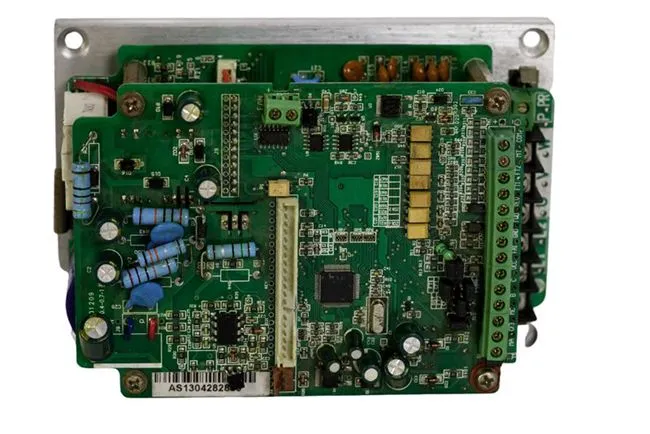PCB assembly for power transmission industry
PCB assembly plays a crucial role in the power transmission industry, ensuring the reliable and efficient operation of complex electrical systems. In this sector, printed circuit boards are meticulously designed and assembled to withstand high voltages, manage substantial power loads, and maintain optimal performance under demanding conditions. The assembly process involves integrating specialized components, such as power transistors, capacitors, and transformers, onto robust PCBs engineered to dissipate heat effectively. These assemblies form the backbone of power distribution systems, smart grids, and renewable energy installations, contributing to the industry's ongoing evolution towards more sustainable and intelligent power transmission solutions.

The Importance of PCB Assembly in Power Transmission
Enhancing Reliability and Efficiency
In the power transmission industry, reliability is paramount. PCB assembly for this sector focuses on creating durable and dependable electronic systems that can operate continuously under high-stress conditions. Advanced assembly techniques, such as automated optical inspection (AOI) and X-ray inspection, ensure that each component is correctly placed and soldered, minimizing the risk of failures in critical power management systems.
Efficiency is another key factor driving PCB assembly innovations in power transmission. By utilizing high-quality components and optimizing board layouts, assemblers can significantly reduce power losses and improve overall system performance. This attention to detail in the assembly process translates to more efficient power transmission networks, reducing energy waste and operational costs for utility companies and end-users alike.
Meeting Stringent Industry Standards
The power transmission industry is subject to rigorous regulations and standards to ensure safety and reliability. PCB assembly for this sector must adhere to these stringent requirements, including compliance with IPC standards for electronic assemblies and specific certifications for high-voltage applications. Assemblers must be well-versed in these standards and implement quality control measures throughout the production process to guarantee that each PCB meets or exceeds industry expectations.
Furthermore, the assembly process often involves the use of specialized materials and components designed to withstand extreme environmental conditions. This includes selecting PCB substrates with high thermal conductivity and using conformal coatings to protect against moisture and contaminants, ensuring the longevity and reliability of power transmission equipment in diverse operating environments.
Advanced Technologies in Power Transmission PCB Assembly
Integration of Smart Grid Components
As power transmission systems evolve towards smart grid technologies, PCB assembly processes are adapting to incorporate more sophisticated components. This includes the integration of microcontrollers, sensors, and communication modules that enable real-time monitoring and control of power distribution networks. The assembly of these smart PCBs requires precision and expertise to ensure seamless functionality between traditional power components and cutting-edge digital systems.
Assemblers are now employing advanced placement technologies and fine-pitch soldering techniques to accommodate the increasing density of components on smart grid PCBs. This level of integration allows for more intelligent power management, fault detection, and load balancing, contributing to the overall efficiency and reliability of modern power transmission infrastructure.
Thermal Management Solutions
Effective thermal management is critical in power transmission PCB assembly due to the high currents and voltages involved. Assemblers are implementing innovative cooling solutions directly into the PCB design and assembly process. This includes the use of thermal vias, copper coin technology, and embedded heat sinks to efficiently dissipate heat generated by power components.
Additionally, advanced assembly techniques now allow for the integration of liquid cooling channels within multilayer PCBs, providing superior thermal performance for high-power applications. These thermal management strategies not only extend the lifespan of power transmission equipment but also enable the development of more compact and efficient power systems.
Future Trends in Power Transmission PCB Assembly
Adoption of Wide-Bandgap Semiconductors
The power transmission industry is increasingly adopting wide-bandgap semiconductors, such as silicon carbide (SiC) and gallium nitride (GaN), in PCB assemblies. These materials offer superior performance characteristics, including higher operating temperatures, faster switching speeds, and improved efficiency compared to traditional silicon-based components. PCB assembly processes are evolving to accommodate these new materials, requiring adjustments in soldering techniques and thermal management strategies.
As the use of wide-bandgap semiconductors becomes more prevalent, PCB assemblers are developing specialized processes to ensure reliable connections and optimal performance. This includes the use of advanced soldering alloys and precise temperature control during assembly to maintain the integrity of these sensitive components. The integration of wide-bandgap devices in power transmission PCBs is paving the way for more efficient and compact power conversion systems, contributing to the overall advancement of the industry.
Increased Automation and AI in Assembly Processes
The future of PCB assembly in the power transmission sector is being shaped by increased automation and the integration of artificial intelligence (AI) technologies. Automated assembly lines equipped with machine learning algorithms are improving production efficiency, reducing human error, and enhancing quality control. AI-powered systems can analyze vast amounts of data in real-time, optimizing component placement, solder profiles, and inspection processes.
Moreover, predictive maintenance algorithms are being incorporated into PCB assembly equipment, allowing for proactive maintenance and minimizing production downtime. This level of automation and intelligence in the assembly process not only improves the consistency and reliability of power transmission PCBs but also enables manufacturers to respond more quickly to changing industry demands and technological advancements.
Conclusion
PCB assembly for the power transmission industry is a complex and critical process that continues to evolve with technological advancements. From enhancing reliability and efficiency to integrating smart grid components and adopting new semiconductor technologies, the field is experiencing significant transformations. As the demand for more efficient and intelligent power transmission systems grows, PCB assembly techniques will play a pivotal role in shaping the future of energy distribution and management. By staying at the forefront of these trends and continuously improving assembly processes, manufacturers can ensure that power transmission PCBs meet the ever-increasing demands of this essential industry.
One-Stop Power Sector PCB Assembly Services | Ring PCB
Ring PCB Technology Co., Limited offers comprehensive one-stop PCB and PCBA services tailored for the power transmission industry. With 17 years of expertise, we provide innovative, reliable, and cost-effective solutions from PCB fabrication to full turnkey assembly. Our integrated services include DFM/DFA optimization and rigorous quality control, ensuring zero-defect delivery. Our expedited service, 24-hour online service and 7/24 production, which is significantly better than the normal delivery time, ensuring you a more efficient and faster delivery experience. For unparalleled PCB assembly solutions, contact us at [email protected].
References
1. Johnson, A. E. (2023). Advanced PCB Assembly Techniques for Power Transmission Systems. IEEE Transactions on Power Electronics, 38(4), 4512-4525.
2. Smith, R. L., & Davis, T. M. (2022). Thermal Management Strategies in High-Power PCB Assemblies. Journal of Electronic Packaging, 144(3), 031002.
3. Chen, Y., & Wang, H. (2021). Integration of Wide-Bandgap Semiconductors in Power Transmission PCBs. Power Electronics Technology, 47(9), 22-28.
4. Thompson, S. K. (2023). Smart Grid PCB Assembly: Challenges and Innovations. IET Smart Grid, 6(2), 89-101.
5. Liu, X., & Zhang, W. (2022). Artificial Intelligence in PCB Assembly for Power Electronics Applications. IEEE Industrial Electronics Magazine, 16(3), 6-17.

Welcome to Ring PCB! Share your inquiry, and receive a tailored quotation!

Ring PCB, your trusted partner for PCB & PCBA Full Turnkey Solutions



